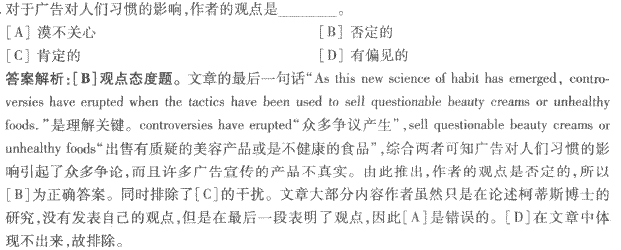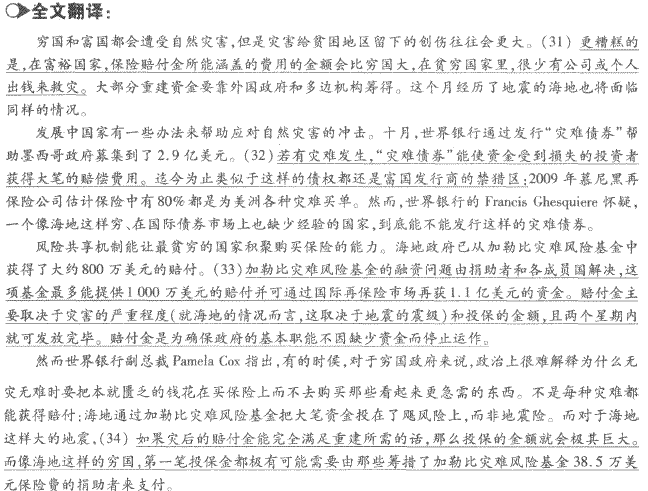( ) looking at the positive side of life, he always pays attention to the negative side,A、More thanB、Except forC、ExceptD、Rather than
题目
( ) looking at the positive side of life, he always pays attention to the negative side,
A、More than
B、Except for
C、Except
D、Rather than
相似考题
更多“( ) looking at the positive side of life, he always pays attention to the negative s ”相关问题
-
第1题:
The author's attitude toward the influence of advertisement on people's habits is( )
[A] indifferent
[B] negative
[C] positive
[D] biased
正确答案:B


-
第2题:
In general, the Western experts' attitude towards TCM is_____.A.indifferent.
B.positive.
C.negative.
D.doubtful.答案:D解析: -
第3题:
下列Moore型状态机采用Verilog语言主控时序部分正确的是:
A.always@(posedge clk or negedge reset) begin if(!reset) current_state<=s0; else current_state<=next_state; end
B.always@(posedge clk ) begin if(!reset) current_state<=s0; else current_state<=next_state; end
C.always@(posedge clk t) if(reset) current_state<=s0; else current_state<=next_state;
D.always@(posedge clk or negedge reset) if(reset) current_state<=s0; else current_state<=next_state;
always@(posedge clk or negedge reset) begin if(!reset) current_state<=s0; else current_state<=next_state; end -
第4题:
The author's attitude toward the insurance facility is( )
[A] objective
[B] negative
[C] positive
[D] biased
正确答案:A

-
第5题:
4、以下的描述中,必然是对Mealy型状态机的描述的是?
A.always @(*) case (state) S0: begin out = 0; if (in) next_state = S1; else next_state = S2; end ……#B.always @(*) case (state) S0: begin if (in) next_state = S1; else next_state = S0; end ……#C.always @(*) case (state) S0: begin if (in) begin next_state = S1; out=1 end else next_state = S0; end ……#D.以上答案均不正确always @(*) case (state) S0: begin if (in) begin next_state = S1; out=1 end else next_state = S0; end …… -
第6题:
以下的描述中,必然是对Mealy型状态机的描述的是?
A.always @(*) case (state) S0: begin out = 0; if (in) next_state = S1; else next_state = S2; end ……#B.always @(*) case (state) S0: begin if (in) next_state = S1; else next_state = S0; end ……#C.always @(*) case (state) S0: begin if (in) begin next_state = S1; out=1 end else next_state = S0; end ……#D.以上答案均不正确always @(*) case (state) S0: begin if (in) begin next_state = S1; out=1 end else next_state = S0; end ……
